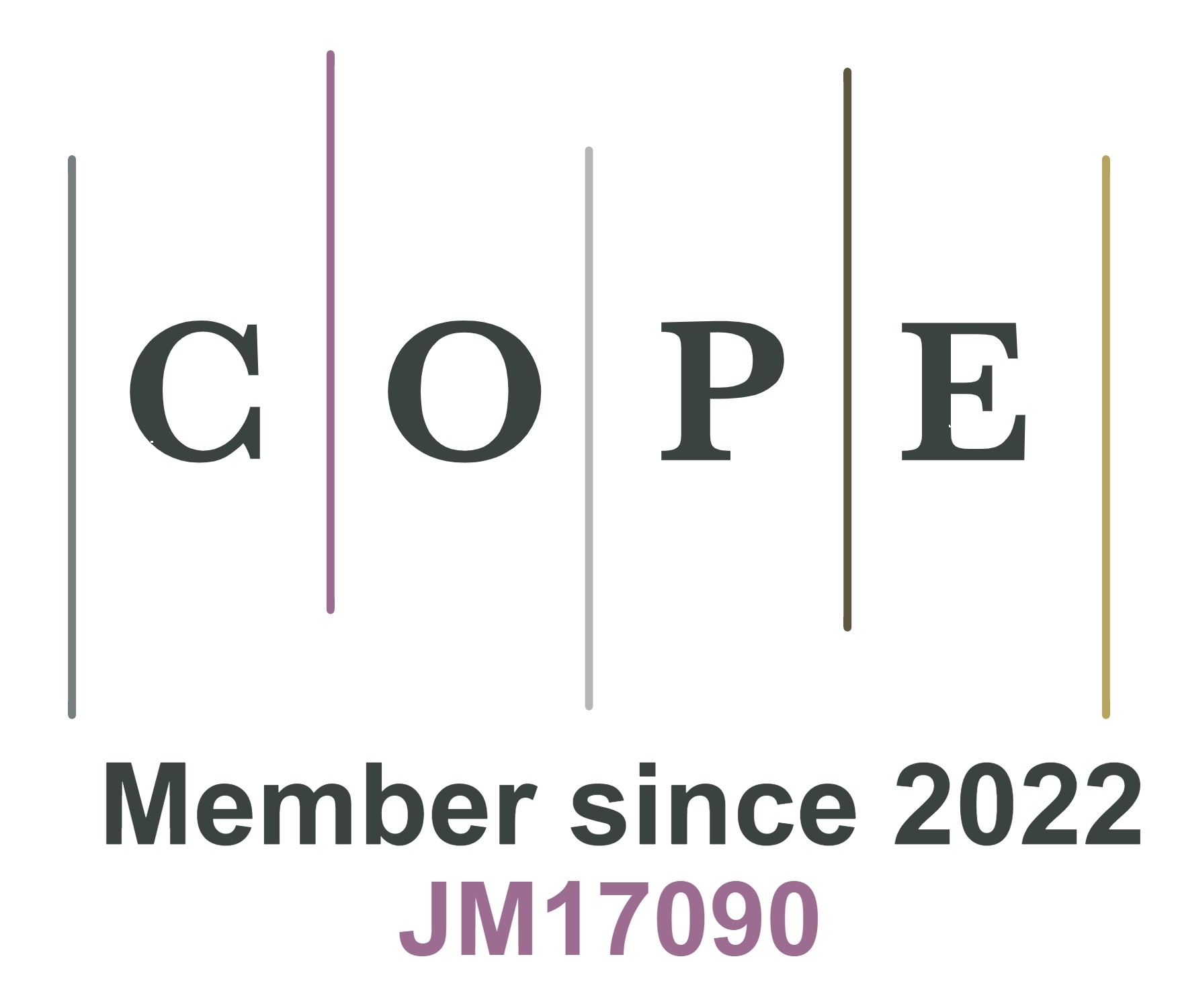REFERENCES
1. Yu, Z.; Zahid, A.; Taha, A.; et al. An intelligent implementation of multi-sensing data fusion with neuromorphic computing for human activity recognition. IEEE. Internet. Things. J. 2023, 10, 1124-33.
2. Ji, X.; Zhao, X.; Tan, M. C.; Zhao, R. Artificial perception built on memristive system: visual, auditory, and tactile sensations. Adv. Intell. Syst. 2020, 2, 1900118.
3. Lee, J. P.; Jang, H.; Jang, Y.; et al. Encoding of multi-modal emotional information via personalized skin-integrated wireless facial interface. Nat. Commun. 2024, 15, 530.
4. Xiong, W.; Zhu, C.; Guo, D.; et al. Bio-inspired, intelligent flexible sensing skin for multifunctional flying perception. Nano. Energy. 2021, 90, 106550.
5. Zhao, C.; Park, J.; Root, S. E.; Bao, Z. Skin-inspired soft bioelectronic materials, devices and systems. Nat. Rev. Bioeng. 2024, 2, 671-90.
6. Wan, T.; Shao, B.; Ma, S.; Zhou, Y.; Li, Q.; Chai, Y. In-sensor computing: materials, devices, and integration technologies. Adv. Mater. 2023, 35, 2203830.
7. Wang, Z.; Wang, Y.; Zhang, X.; et al. Flexible photovoltaic micro-power system enabled with a customized MPPT. Appl. Energy. 2024, 367, 123425.
8. Milakov, M. Deep learning with GPUs. https://www.nvidia.co.uk/docs/IO/147844/Deep-Learning-With-GPUs-MaximMilakov-NVIDIA.pdf. (accessed 2025-03-14).
9. Cox, D. D.; Dean, T. Neural networks and neuroscience-inspired computer vision. Curr. Biol. 2014, 24, R921-9.
10. Yoon, S. J.; Park, J. T.; Lee, Y. K. The neuromorphic computing for biointegrated electronics. Soft. Sci. 2024, 4, 30.
11. Han, J.; Yun, S.; Lee, S.; Yu, J.; Choi, Y. A review of artificial spiking neuron devices for neural processing and sensing. Adv. Funct. Mater. 2022, 32, 2204102.
12. Torricelli, F.; Adrahtas, D. Z.; Bao, Z.; et al. Electrolyte-gated transistors for enhanced performance bioelectronics. Nat. Rev. Methods. Primers. 2021, 1, 66.
13. Jang, Y.; Park, J.; Kang, J.; Lee, S. Amorphous InGaZnO (a-IGZO) synaptic transistor for neuromorphic computing. ACS. Appl. Electron. Mater. 2022, 4, 1427-48.
14. Song, M. K.; Kang, J. H.; Zhang, X.; et al. Recent advances and future prospects for memristive materials, devices, and systems. ACS. Nano. 2023, 17, 11994-2039.
15. Tong, P.; Wang, W.; Xu, H.; et al. Highly parallel writing strategy based on diagonal-gates-connection 1T1R arrays. IEEE. Trans. Electron. Devices. 2022, 69, 6693-8.
16. Song, H.; Lee, M. G.; Kim, G.; et al. Fully memristive elementary motion detectors for a maneuver prediction. Adv. Mater. 2024, 36, e2309708.
17. Wu, Z.; Lu, J.; Shi, T.; et al. A habituation sensory nervous system with memristors. Adv. Mater. 2020, 32, e2004398.
18. Li, Q. X.; Liu, Y. L.; Cao, Y. Y.; et al. Ferroelectric artificial synapse for neuromorphic computing and flexible applications. Fundam. Res. 2023, 3, 960-6.
19. Chen, C.; Zhou, Y.; Tong, L.; Pang, Y.; Xu, J. Emerging 2D ferroelectric devices for in-sensor and in-memory computing. Adv. Mater. 2025, 37, e2400332.
20. Demasius, K.; Kirschen, A.; Parkin, S. Energy-efficient memcapacitor devices for neuromorphic computing. Nat. Electron. 2021, 4, 748-56.
21. Teja Nibhanupudi, S. S.; Roy, A.; Veksler, D.; et al. Ultra-fast switching memristors based on two-dimensional materials. Nat. Commun. 2024, 15, 2334.
22. Fu, G. E.; Yang, H.; Zhao, W.; Samorì, P.; Zhang, T. 2D conjugated polymer thin films for organic electronics: opportunities and challenges. Adv. Mater. 2024, 36, e2311541.
23. Lv, Z.; Jiang, M. H.; Liu, H. Y.; et al. Temperature-resilient polymeric memristors for effective deblurring in static and dynamic imaging. Adv. Funct. Mater. 2025, 2424382.
24. Liu, Y.; Fischer, F.; Hu, H.; et al. Inkjet printed metal–organic frameworks for non-volatile memory devices suitable for printed RRAM. Adv. Funct. Mater. 2025, 35, 2412372.
25. Qian, F.; Bu, X.; Wang, J.; Lv, Z.; Han, S.; Zhou, Y. Evolutionary 2D organic crystals for optoelectronic transistors and neuromorphic computing. Neuromorph. Comput. Eng. 2022, 2, 012001.
26. Duan, X.; Cao, Z.; Gao, K.; et al. Memristor-based neuromorphic chips. Adv. Mater. 2024, 36, e2310704.
27. Kim, T.; Hu, S.; Kim, J.; et al. Spiking neural network (SNN) with memristor synapses having non-linear weight update. Front. Comput. Neurosci. 2021, 15, 646125.
28. Krauhausen, I.; Coen, C.; Spolaor, S.; Gkoupidenis, P.; van de Burgt, Y. Brain-inspired organic electronics: merging neuromorphic computing and bioelectronics using conductive polymers. Adv. Funct. Mater. 2024, 34, 2307729.
29. Kotsiantis, S. B.; Zaharakis, I. D.; Pintelas, P. E. Machine learning: a review of classification and combining techniques. Artif. Intell. Rev. 2006, 26, 159-90.
30. Peng, H.; Gan, L.; Guo, X. Memristor-based spiking neural networks: cooperative development of neural network architecture/algorithms and memristors. Chip 2024, 3, 100093.
31. Chen, J.; Skatchkovsky, N.; Simeone, O. Neuromorphic integrated sensing and communications. IEEE. Wireless. Commun. Lett. 2023, 12, 476-80.
32. Chen, J.; Skatchkovsky, N.; Simeone, O. Neuromorphic Wireless cognition: event-driven semantic communications for remote inference. IEEE. Trans. Cogn. Commun. Netw. 2023, 9, 252-65.
33. Ng, S. E.; Vishwanath, S. K.; Yang, J.; et al. Advances in multi-terminal transistors as reconfigurable interconnections for neuromorphic sensing and processing. Adv. Elect. Mater. 2024, 10, 2300540.
34. Fang, S. L.; Han, C. Y.; Han, Z. R.; et al. An artificial spiking afferent neuron system achieved by 1M1S for neuromorphic computing. IEEE. Trans. Electron. Devices. 2022, 69, 2346-52.
35. Jang, H.; Lee, J.; Beak, C. J.; Biswas, S.; Lee, S. H.; Kim, H. Flexible neuromorphic electronics for wearable near-sensor and in-sensor computing systems. Adv. Mater. 2025, 37, e2416073.
36. Zhang, H.; Qiu, P.; Lu, Y.; et al. In-sensor computing realization using fully CMOS-compatible TiN/HfOx-based neuristor array. ACS. Sens. 2023, 8, 3873-81.
37. Zhu, Y.; Mao, H.; Zhu, Y.; et al. CMOS-compatible neuromorphic devices for neuromorphic perception and computing: a review. Int. J. Extrem. Manuf. 2023, 5, 042010.
38. Schuman, C. D.; Kulkarni, S. R.; Parsa, M.; Mitchell, J. P.; Date, P.; Kay, B. Opportunities for neuromorphic computing algorithms and applications. Nat. Comput. Sci. 2022, 2, 10-9.
39. Sandamirskaya, Y.; Kaboli, M.; Conradt, J.; Celikel, T. Neuromorphic computing hardware and neural architectures for robotics. Sci. Robot. 2022, 7, eabl8419.
40. Kong, H.; Li, W.; Song, Z.; Niu, L. Recent advances in multimodal sensing integration and decoupling strategies for tactile perception. Mater. Futures. 2024, 3, 022501.
41. Liu, Y.; Wang, J.; Liu, T.; et al. Triboelectric tactile sensor for pressure and temperature sensing in high-temperature applications. Nat. Commun. 2025, 16, 383.
42. Neupane, B.; Aryal, J.; Rajabifard, A. CNNs for remote extraction of urban features: a survey-driven benchmarking. Expert. Syst. Appl. 2024, 255, 124751.
43. Zheng, X.; Zhang, L.; Xu, C.; Chen, X.; Cui, Z. An attribution graph-based interpretable method for CNNs. Neural. Netw. 2024, 179, 106597.
44. Xu, K.; Cai, Z.; Luo, H.; et al. Toward integrated multifunctional laser-induced graphene-based skin-like flexible sensor systems. ACS. Nano. 2024, 18, 26435-76.
45. Su, Y.; Otake, K. I.; Zheng, J. J.; et al. Switching molecular recognition selectivities by temperature in a diffusion-regulatory porous material. Nat. Commun. 2024, 15, 144.
47. Wang, W.; Yao, D.; Wang, H.; et al. A breathable, stretchable, and self-calibrated multimodal electronic skin based on hydrogel microstructures for wireless wearables. Adv. Funct. Mater. 2024, 34, 2316339.
48. Ferreira, R. G.; Silva, A. P.; Nunes-Pereira, J. Current on-skin flexible sensors, materials, manufacturing approaches, and study trends for health monitoring: a review. ACS. Sens. 2024, 9, 1104-33.
49. Ahmed, S. M.; Soin, N.; Hatta, S. F. W. M.; Wahab, Y. A. Flexible CNT/silicon piezo-resistive strain sensors geometrical influences on sensitivity for human motion detection. J. Comput. Electron. 2024, 23, 456-66.
50. Joshi, A.; Kanungo, D. P.; Panigrahi, R. K. Multi-frame fringing field capacitive soil moisture sensor with enhanced sensitivity and penetration depth. IEEE. Trans. Instrum. Meas. 2024, 73, 1-13.
51. Xiong, J.; Cui, P.; Chen, X.; et al. Skin-touch-actuated textile-based triboelectric nanogenerator with black phosphorus for durable biomechanical energy harvesting. Nat. Commun. 2018, 9, 4280.
52. Liu, Z.; Chen, D.; Ma, J.; Wang, T.; Jia, D.; Liu, Y. Multimodal capacitive proximity sensing array with programmable spatial resolution and dynamic detection range. Sens. Actuators. A. Phys. 2024, 370, 115279.
53. Wang, L.; Qi, X.; Li, C.; Wang, Y. Multifunctional tactile sensors for object recognition. Adv. Funct. Mater. 2024, 34, 2409358.
54. Dai, Y.; Yang, C.; Liu, K.; Liu, A.; Liu, Y. TimeDDPM: time series augmentation strategy for industrial soft sensing. IEEE. Sensors. J. 2024, 24, 2145-53.
55. Geng, H.; Liu, H.; Ma, L.; Yi, X. Multi-sensor filtering fusion meets censored measurements under a constrained network environment: advances, challenges and prospects. Int. J. Syst. Sci. 2021, 52, 3410-36.
56. Li, D.; Yao, K.; Gao, Z.; Liu, Y.; Yu, X. Recent progress of skin-integrated electronics for intelligent sensing. Light. Adv. Manuf. 2021, 2, 39-58.
57. Yuan, X.; Ou, C.; Wang, Y.; Yang, C.; Gui, W. A layer-wise data augmentation strategy for deep learning networks and its soft sensor application in an industrial hydrocracking process. IEEE. Trans. Neural. Netw. Learn. Syst. 2021, 32, 3296-305.
58. Naqi, M.; Yu, Y.; Cho, Y.; et al. Integration of IGZO-based memristor and Pt-based temperature sensor for enhanced artificial nociceptor system. Mater. Today. Nano. 2024, 27, 100491.
59. Wei, Y.; Xiang, L.; Zhu, P.; Qian, Y.; Zhao, B.; Chen, G. Multifunctional organohydrogel-based ionic skin for capacitance and temperature sensing toward intelligent skin-like devices. Chem. Mater. 2021, 33, 8623-34.
60. Liu, Z.; Tian, B.; Zhang, B.; et al. A thin-film temperature sensor based on a flexible electrode and substrate. Microsyst. Nanoeng. 2021, 7, 42.
61. Ma, C.; Xu, D.; Huang, Y. C.; et al. Robust flexible pressure sensors made from conductive micropyramids for manipulation tasks. ACS. Nano. 2020, 14, 12866-76.
62. Ji, J.; Zhao, W.; Wang, Y.; Li, Q.; Wang, G. Templated laser-induced-graphene-based tactile sensors enable wearable health monitoring and texture recognition via deep neural network. ACS. Nano. 2023, 17, 20153-66.
63. Zou, Y.; Gai, Y.; Tan, P.; et al. Stretchable graded multichannel self-powered respiratory sensor inspired by shark gill. Fundam. Res. 2022, 2, 619-28.
64. Xie, X.; Wang, Q.; Zhao, C.; et al. Neuromorphic computing-assisted triboelectric capacitive-coupled tactile sensor array for wireless mixed reality interaction. ACS. Nano. 2024, 18, 17041-52.
65. Wu, C.; Kim, T. W.; Park, J. H.; et al. Self-powered tactile sensor with learning and memory. ACS. Nano. 2020, 14, 1390-8.
66. Chen, S.; Xin, S.; Yang, L.; Guo, Y.; Zhang, W.; Sun, K. Multi-sized planar capacitive pressure sensor with ultra-high sensitivity. Nano. Energy. 2021, 87, 106178.
67. Lee, H. K.; Chung, J.; Chang, S.; Yoon, E. Normal and shear force measurement using a flexible polymer tactile sensor with embedded multiple capacitors. J. Microelectromech. Syst. 2008, 17, 934-42.
68. Zhu, Y.; Wu, Y.; Wang, G.; et al. A flexible capacitive pressure sensor based on an electrospun polyimide nanofiber membrane. Org. Electron. 2020, 84, 105759.
69. Li, H.; Wang, Z.; Sun, M.; et al. Breathable and skin-conformal electronics with hybrid integration of microfabricated multifunctional sensors and kirigami-structured nanofibrous substrates. Adv. Funct. Mater. 2022, 32, 2202792.
70. Lee, J. H.; Cho, K.; Kim, J. K. Age of flexible electronics: emerging trends in soft multifunctional sensors. Adv. Mater. 2024, 36, e2310505.
71. Luo, H.; Pang, G.; Xu, K.; Ye, Z.; Yang, H.; Yang, G. A fully printed flexible sensor sheet for simultaneous proximity–pressure–temperature detection. Adv. Mater. Technol. 2021, 6, 2100616.
72. Yang, Q.; Ye, Z.; Wu, R.; et al. A highly sensitive iontronic bimodal sensor with pressure-temperature discriminability for robot skin. Adv. Mater. Technol. 2023, 8, 2300561.
73. Liu, Z.; Hu, X.; Bo, R.; et al. A three-dimensionally architected electronic skin mimicking human mechanosensation. Science 2024, 384, 987-94.
74. Li, P.; Xie, L.; Su, M.; et al. Skin-inspired large area iontronic pressure sensor with ultra-broad range and high sensitivity. Nano. Energy. 2022, 101, 107571.
75. Fang, Z.; Yu, H. Y.; Li, X.; Singh, N.; Lo, G. Q.; Kwong, D. L. HfOx/TiOx/HfOx/TiOx multilayer-based forming-free RRAM devices with excellent uniformity. IEEE. Electron. Device. Lett. 2011, 32, 566-8.
76. Fan, J.; Feng, J.; Gao, Y.; et al. PEDOT-ZnO nanoparticle hybrid film-based memristors for synapse emulation in neuromorphic computing applications. ACS. Appl. Nano. Mater. 2024, 7, 5661-8.
77. Xu, Y.; Wang, H.; Ye, D.; Yang, R.; Huang, Y.; Miao, X. Electrohydrodynamically printed flexible organic memristor for leaky integrate and fire neuron. IEEE. Electron. Device. Lett. 2022, 43, 116-9.
78. Strukov, D. B.; Snider, G. S.; Stewart, D. R.; Williams, R. S. The missing memristor found. Nature 2008, 453, 80-3.
79. Duan, Q.; Jing, Z.; Zou, X.; et al. Spiking neurons with spatiotemporal dynamics and gain modulation for monolithically integrated memristive neural networks. Nat. Commun. 2020, 11, 3399.
80. Xue, F.; Chen, L.; Wang, L.; et al. MoS2 tribotronic transistor for smart tactile switch. Adv. Funct. Mater. 2016, 26, 2104-9.
81. Chen, L.; Wen, C.; Zhang, S.; Wang, Z. L.; Zhang, Z. Artificial tactile peripheral nervous system supported by self-powered transducers. Nano. Energy. 2021, 82, 105680.
82. Chen, L.; Karilanova, S.; Chaki, S.; et al. Spike timing-based coding in neuromimetic tactile system enables dynamic object classification. Science 2024, 384, 660-5.
83. Zhong, D.; Wu, C.; Jiang, Y.; et al. High-speed and large-scale intrinsically stretchable integrated circuits. Nature 2024, 627, 313-20.
84. Wang, W.; Jiang, Y.; Zhong, D.; et al. Neuromorphic sensorimotor loop embodied by monolithically integrated, low-voltage, soft e-skin. Science 2023, 380, 735-42.
85. Schwartz, G.; Tee, B. C.; Mei, J.; et al. Flexible polymer transistors with high pressure sensitivity for application in electronic skin and health monitoring. Nat. Commun. 2013, 4, 1859.
86. Lee, Y.; Oh, J. Y.; Lee, T. Neuromorphic skin based on emerging artificial synapses. Adv. Mater. Technol. 2022, 7, 2200193.
87. Su, Q.; Zou, Q.; Li, Y.; et al. A stretchable and strain-unperturbed pressure sensor for motion interference-free tactile monitoring on skins. Sci. Adv. 2021, 7, eabi4563.
88. Kweon, H.; Kim, J. S.; Kim, S.; et al. Ion trap and release dynamics enables nonintrusive tactile augmentation in monolithic sensory neuron. Sci. Adv. 2023, 9, eadi3827.
89. Sun, F.; Lu, Q.; Hao, M.; et al. An artificial neuromorphic somatosensory system with spatio-temporal tactile perception and feedback functions. npj. Flex. Electron. 2022, 6, 202.
90. Yang, C.; Wang, H.; Zhou, G.; et al. A multifunctional memristor with coexistence of NDR and RS behaviors for logic operation and somatosensory temperature sensing applications. Nano. Today. 2024, 57, 102382.
91. Wang, L.; Zhang, P.; Gao, Z.; Wen, D. Artificial tactile sensing neuron with tactile sensing ability based on a chitosan memristor. Adv. Sci. 2024, 11, e2308610.
92. Xie, Z.; Zhu, X.; Wang, W.; et al. Temporal pattern coding in ionic memristor-based spiking neurons for adaptive tactile perception. Adv. Elect. Mater. 2022, 8, 2200334.
93. Zhu, J.; Zhang, X.; Wang, M.; et al. An artificial spiking nociceptor integrating pressure sensors and memristors. IEEE. Electron. Device. Lett. 2022, 43, 962-5.
94. Zhu, J.; Zhang, X.; Wang, R.; et al. A heterogeneously integrated spiking neuron array for multimode-fused perception and object classification. Adv. Mater. 2022, 34, e2200481.
95. Wu, Y.; Zhao, R.; Zhu, J.; et al. Brain-inspired global-local learning incorporated with neuromorphic computing. Nat. Commun. 2022, 13, 65.
96. Zhou, G.; Wang, Z.; Sun, B.; et al. Volatile and nonvolatile memristive devices for neuromorphic computing. Adv. Elect. Mater. 2022, 8, 2101127.
97. Chen, S.; Liu, T.; Jia, Y.; Li, J. Recent advances in bio-integrated electrochemical sensors for neuroengineering. Fundam. Res. 2025, 5, 29-47.
98. Roy, K.; Jaiswal, A.; Panda, P. Towards spike-based machine intelligence with neuromorphic computing. Nature 2019, 575, 607-17.
99. Yuan, R.; Tiw, P. J.; Cai, L.; et al. A neuromorphic physiological signal processing system based on VO2 memristor for next-generation human-machine interface. Nat. Commun. 2023, 14, 3695.
100. Wang, Z.; Joshi, S.; Savel’ev, S.; et al. Fully memristive neural networks for pattern classification with unsupervised learning. Nat. Electron. 2018, 1, 137-45.
101. Serb, A.; Bill, J.; Khiat, A.; Berdan, R.; Legenstein, R.; Prodromakis, T. Unsupervised learning in probabilistic neural networks with multi-state metal-oxide memristive synapses. Nat. Commun. 2016, 7, 12611.
102. Fang, W.; Chen, Y.; Ding, J.; et al. SpikingJelly: an open-source machine learning infrastructure platform for spike-based intelligence. Sci. Adv. 2023, 9, eadi1480.
103. Yao, P.; Wu, H.; Gao, B.; et al. Fully hardware-implemented memristor convolutional neural network. Nature 2020, 577, 641-6.
104. Fu, Y.; Zhao, S.; Wang, L.; Zhu, R. A wearable sensor using structured silver-particle reinforced PDMS for radial arterial pulse wave monitoring. Adv. Healthc. Mater. 2019, 8, e1900633.
105. Li, Z.; Li, Z.; Tang, W.; et al. Crossmodal sensory neurons based on high-performance flexible memristors for human-machine in-sensor computing system. Nat. Commun. 2024, 15, 7275.
106. Li, G.; Liu, S.; Mao, Q.; Zhu, R. Multifunctional electronic skins enable robots to safely and dexterously interact with human. Adv. Sci. 2022, 9, e2104969.
107. Son, D.; Kang, J.; Vardoulis, O.; et al. An integrated self-healable electronic skin system fabricated via dynamic reconstruction of a nanostructured conducting network. Nat. Nanotechnol. 2018, 13, 1057-65.
108. Sang, S.; Pei, Z.; Zhang, F.; et al. Three-dimensional printed bimodal electronic skin with high resolution and breathability for hair growth. ACS. Appl. Mater. Interfaces. 2022, 14, 31493-501.
109. Shi, W.; Lyu, Z.; Tang, S.; Chia, T.; Yang, C. A bionic hand controlled by hand gesture recognition based on surface EMG signals: a preliminary study. Biocybern. Biomed. Eng. 2018, 38, 126-35.
110. Gao, W.; Ota, H.; Kiriya, D.; Takei, K.; Javey, A. Flexible electronics toward wearable sensing. Acc. Chem. Res. 2019, 52, 523-33.
111. Ji, Z.; Zhu, H.; Liu, H.; et al. The design and characterization of a flexible tactile sensing array for robot skin. Sensors 2016, 16, 2001.
112. Chen, S.; Zhou, Z.; Hou, K.; et al. Artificial organic afferent nerves enable closed-loop tactile feedback for intelligent robot. Nat. Commun. 2024, 15, 7056.
113. de Oliveira, T. E.; Cretu, A.; Petriu, E. M. Multimodal bio-inspired tactile sensing module. IEEE. Sensors. J. 2017, 17, 3231-43.
114. Zhang, C.; Ye, W. B.; Zhou, K.; et al. Bioinspired artificial sensory nerve based on nafion memristor. Adv. Funct. Mater. 2019, 29, 1808783.
115. Hui, X.; Tang, L.; Zhang, D.; et al. Acoustically enhanced triboelectric stethoscope for ultrasensitive cardiac sounds sensing and disease diagnosis. Adv. Mater. 2024, 36, e2401508.
116. Zhao, D.; Zhuo, J.; Chen, Z.; et al. Eco-friendly in-situ gap generation of no-spacer triboelectric nanogenerator for monitoring cardiovascular activities. Nano. Energy. 2021, 90, 106580.
117. Sun, Y.; Mao, J.; Cao, L.; et al. Intelligent cardiovascular disease diagnosis system combined piezoelectric nanogenerator based on 2D Bi2O2Se with deep learning technique. Nano. Energy. 2024, 128, 109878.
118. Chen, Z.; Xu, M.; Zhou, C.; et al. Phase transformation enabled textile triboelectric nanogenerators for wearable energy harvesting and personal thermoregulation. Nano. Energy. 2024, 132, 110361.
119. Sengupta, D.; Mastella, M.; Chicca, E.; Kottapalli, A. G. P. Skin-inspired flexible and stretchable electrospun carbon nanofiber sensors for neuromorphic sensing. ACS. Appl. Electron. Mater. 2022, 4, 308-15.
120. Sengupta, D.; Romano, J.; Kottapalli, A. G. P. Electrospun bundled carbon nanofibers for skin-inspired tactile sensing, proprioception and gesture tracking applications. npj. Flex. Electron. 2021, 5, 126.
121. Kim, S.; Lee, S.; Park, J. A skin-inspired, self-powered tactile sensor. Nano. Energy. 2022, 101, 107608.









